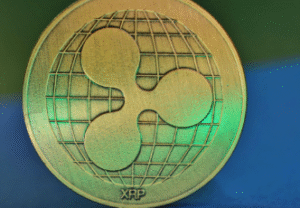#Ethereum #cryptoexchange #marketvolatility #blockchain #ETH #cryptocurrency #onchainanalysis #digitalassets
Ethereum (ETH), the second-largest cryptocurrency by market capitalization, has demonstrated a remarkable trend throughout 2024 that has caught the attention of both investors and analysts within the crypto space. A significant reduction in the amount of ETH held on exchanges has been noted, leading to considerable discussions regarding its implications on the market and what it signals about investor behavior. Traditionally, the volume of a cryptocurrency held on exchanges is viewed as a barometer for assessing potential selling pressure. A high balance indicates that investors might be preparing to sell, which could lead to a decrease in price. Conversely, a decline in exchange reserves is often interpreted as a sign of long-term holding sentiment among investors, as they transfer their holdings to private wallets for safekeeping. Throughout 2024, Ethereum’s presence on exchanges witnessed a progressive decline, starting the year at 14 million ETH and experiencing a drop below 12.5 million by late June, culminating in an unprecedented low of around 11.7 million ETH by early August.
This decrease in Ethereum exchange reserves to levels not seen since 2016 is particularly noteworthy in the context of ongoing market volatility. Various factors such as macroeconomic indicators, regulatory news, and changes within the Ethereum network itself, could influence such a shift. Analysts suggest that the migration of Ethereum to a proof-of-stake model, alongside increased use of ETH in decentralized finance (DeFi) platforms and staking, might have contributed to this trend. As Ethereum undergoes upgrades to enhance its efficiency and scalability, the attractiveness of holding the asset long-term could be increasing. Particularly, Ethereum’s shift to a more energy-efficient consensus mechanism might be bolstering investors’ confidence in its future prospects.
The fall in exchange reserves is also a crucial factor to consider in the context of Ethereum’s price movements. While the direct correlation between exchange balances and price can be complex, due to the myriad factors influencing market dynamics, historically, a decrease in available supply on exchanges can lead to a tightening of liquidity. This, in turn, might lead to price appreciation under conditions of steady or increasing demand. Throughout 2024, Ethereum has exhibited price volatility, with sharp rises and dips characterizing its market performance. Investors and traders closely monitor such metrics as part of their strategy, considering reduced exchange balances as a potential precursor to bullish trends.
Understanding the implications of decreased Ethereum exchange reserves requires a nuanced approach that takes into account the broader economic environment, technological advancements within the Ethereum ecosystem, and changing patterns of investor behavior. As the cryptocurrency market continues to evolve, such trends offer insight into the growing maturity of digital assets and the shifting landscape of investment strategies. The significant decrease in ETH held on exchanges underscores a long-term confidence in Ethereum as a leading digital asset, despite the inherent market uncertainties. This trend also highlights the importance of on-chain metrics as a tool for understanding market sentiment and making informed investment decisions in the dynamic and ever-changing world of cryptocurrencies.







Comments are closed.